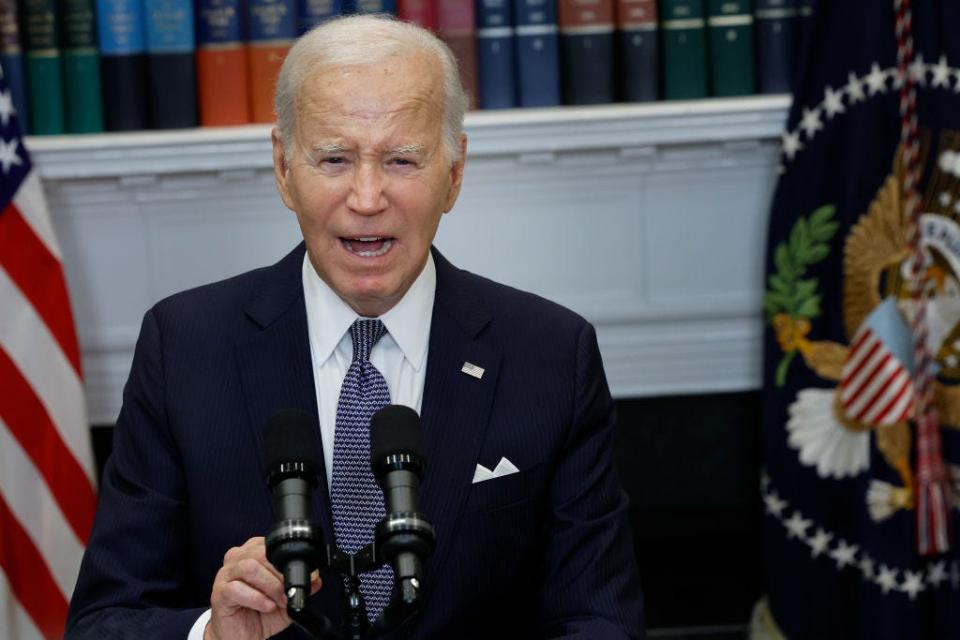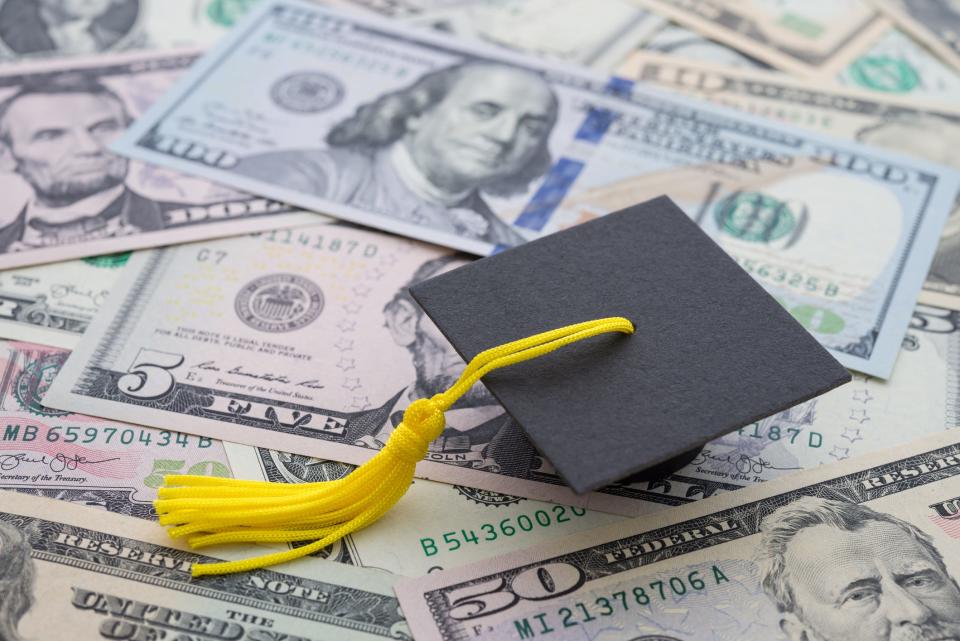Student loan borrowers should keep eyes on their accounts in the coming months as the Biden administration pushes forward with student loan relief initiatives.
Following the Supreme Court’s block on Biden’s initial forgiveness program in 2023, the administration has continued to implement a series of programs to assist some of the 43.2 million borrowers struggling under America’s $1.6 trillion in federal student loan debt.
Earlier this year, changes were made to the income-driven repayment Saving on a Valuable Education (SAVE) Plan, giving borrowers who originally took out $12,000 or less a chance to have loans completely wiped after 10 years of paying.
Earlier this month, the administration also announced an additional $7.7 billion in forgiveness for undergraduate loan holders, a precursor to another cut set to take place in July.
Having trouble keeping up with all of the changes and programs? Here’s what to know.

Biden admin announces $7.7 billion in student loan debt relief
On Wednesday, the Biden administration announced an additional $7.7 billion in loan debt relief was approved for 160,500 borrowers. This will bring the total amount of debt forgiveness up to $167 billion for 4.75 million student loan borrowers, or 1 in 10 debt holders, according to the Department of Education.
Additionally, the administration is working on expanding and contacting eligible borrowers to get a SAVE plan, which currently has 7.7 million borrowers enrolled, 4.3 million of whom have $0 payments, according to the Department of Education.
Is college worth it: The answer for half of Americans is striking.
Who qualifies for the new $7.7 billion debt relief?
The student loan relief will cover debts in three categories of borrowers:
-
$5.1 billion: 66,900 borrowers receiving Public Service Loan Forgiveness (PSLF), which helps people working in public service or nonprofit, will receive relief.
-
$613 million: 54,3000 borrowers who signed up for President Biden’s SAVE Plan and have smaller loans for post-secondary education. Borrowers can receive relief after at least 10 years of payments if they originally borrowed $12,000 or less.
-
$1.9 million: 39,300 borrowers will receive forgiveness on income-driven repayment (IDR) as a result of fixes meant to address concerns about the misuse of forbearance by loan servicers.
Some student loan payments cut in half come July
Undergraduate loan borrowers will have an additional opportunity to get some relief come July, when changes to the percentage you are expected to pay each month based on income will go into place.
Currently, those on a SAVE Plan pay 10% of their discretionary income monthly. Discretionary income is calculated by finding the difference between adjusted gross income and an income that is 225% of the federal poverty line.
In 2024, the federal poverty line is considered $15,060 a year for a single person, according to the Department of Health and Human Services. That means that 225% of the federal poverty line for a one-person household is $33,885. To find the discretionary income for a single-person household, then, you would simply subtract that amount from the adjusted gross annual income. The difference between the two is the number you’re looking for.
A one-person household with a yearly gross income of $50,000 before taxes would have a discretionary income of $16,115, for example. Ten percent of that would be about $1,611, which when divided by 12 would mean the monthly payment via a SAVE plan would come out to about $134.
Come July, however, that monthly percentage will be reduced to 5%, essentially cutting monthly payments in half for many. Now, in the example above, the borrower would owe around $67 a month.
These changes apply to borrowers with undergraduate student loan debt who are enrolled in a SAVE plan. People with both undergraduate and graduate school loans will have payments of 5% to 10% calculated based on the original loan balances. Those with only graduate loans will still have payments of 10% of their discretionary income.
How to know if you’re eligible for forgiveness or relief
The Biden administration has said people eligible for a piece of the $7.7 billion in relief will receive notice via email. Actual balance and account changes will then take a few weeks to appear.
Those wondering if they will see a change in their bill in July can sign into their SAVE Plan account to check their status and eligibility.
How to sign up for SAVE
Enrollment in a SAVE Plan can be done online via studentaid.gov/idr.
SAVE plans are income-driven repayment (IDR) plans that have monthly payments determined by a borrower’s income and family size. These plans are often more affordable than default options which do not inherently take your income and ability to pay into account.
SAVE plans have additional benefits such as eliminating 100% of the remaining monthly interest for both subsidized and unsubsidized loans after you make a full scheduled payment, stopping your outstanding balances from growing due to accruing interest rates.
SAVE also gives borrowers the option to exclude spousal income for those who are married but file taxes separately. This way, monthly payments can be determined solely on your personal outcome and spouses do not need to cosign IDR applications.
Who is eligible for SAVE?


Multiple parameters determine eligibility for a SAVE Plan, most of which are outlined on the studentaid.gov website.
Generally speaking, however, the SAVE Plan is available to federal student borrowers with direct student loans. It is not available for private loans or Parent PLUS loans unless the Parent PLUS loans are already consolidated. Applicants must also be in good standing with servicers.
Federal loans that are generally eligible for a SAVE Plan include:
-
Direct Subsidized Loans
-
Direct Unsubsidized Loans
-
Direct PLUS Loans made to graduate or professional students
-
Direct Consolidation Loans that did not repay any PLUS loans made to parents
-
Consolidates loans from the Federal Family Education Loan (FFEL) Programs, including Federal Perkins Loans, Federal Stafford Loans, FFEL Plus Loans and FFEL Consolidation Loans.
This article originally appeared on USA TODAY: Who gets student loan forgiveness: Another $7 billion OK’d this month


